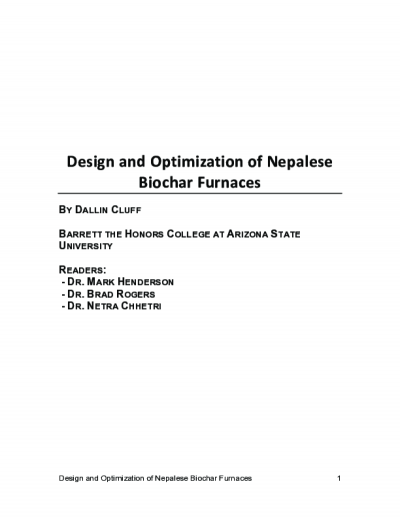Design and Optimization of Nepalese Biochar Furnaces

Description
This thesis sought to better understand the process of creating biochar in kilns representative of those used in current biochar processes in Chitwan National Park, Nepal and surrounding areas. The project had two main objectives: First, design and build a scale kiln representative of those in Nepal. This will allow a multitude of future projects to have access to a well-built kiln in which to run experiments, probe conditions and overall understand the process of pyrolysis. After approval of the plan and construction the second phase of the project began. Second, using the scaled kiln, pyrolyze quantities of biomass and capture the temperature profiles as the burn is started through until it is completed. Using qualitative methods the biochar was then analyzed and this quality compared against the temperature profiles captured. Using these profiles it was hoped that a relationship between how the temperature profiles behave and the quality of the biochar can be produced. The maximum temperature was also be analyzed to find useful correlations to the behavior of the process within the kiln. The project did not find any useful correlation between the maximum temperatures, but it did find useful correlations between temperature profiles and the resulting biochar. A description of how to analyze biochar in the field was also established to help researchers and farmers rate biochar quality while in the field. The kiln itself is housed on the Polytechnic Campus of Arizona State University in the Global Resolve outside storage area at the time of writing.
Date Created
The date the item was original created (prior to any relationship with the ASU Digital Repositories.)
2018-12
Agent
- Author (aut): Cluff, Dallin Michael
- Thesis director: Henderson, Mark
- Committee member: Roger, Brad
- Contributor (ctb): Engineering Programs
- Contributor (ctb): Barrett, The Honors College








